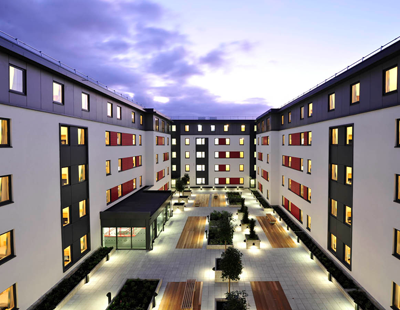Annual investment in the market was as high as £5.7 billion last year, banishing once and for all the notion of student homes as a niche asset class.
Following on from such a strong year in 2015 – where investment levels doubled – there has been some uncertainty about how the market will perform this year.
One thing's for sure, though, early UCAS figures show a continued rise in student numbers in 2016, which will boost demand for property further in the upcoming academic year.
Student numbers 2016
The deadline for initial applications to UCAS passed in January and showed a year-on-year increase once again in the number of people applying for courses in the UK, both from overseas and domestically.
According to the UCAS figures from January, there were some 593,720 applications, which marked a rise of around 1,500 when compared to the same time in 2015.
Since the introduction of higher tuition fees in 2012, student numbers have climbed by an impressive 53,700, showing just how the sector has expanded and why increasingly more investors are turning towards student housing as an asset class.
Overseas students
As with previous years, the biggest driver of increased application numbers was the rise in the number of foreign students coming to the UK.
According to UCAS, the number of UK students applying was broadly the same as in 2015, but it was those students from EU nations and further afield that helped push the overall numbers up.
Non-EU student applicant volumes climbed by around 500 in 2016 to continue an impressive upward trend, but it was those from the EU (excluding the UK) who really ramped up their interest this year.
There were as many as 3,000 more applications from the continent in 2016 than there were in 2015, representing a rise of 6% year-on-year.
Some universities have even seen their EU student applicant numbers climb by up to 40% when compared to last year.
The UK's continued reputation as a high performing country when it comes to providing higher education means that the annual increases in applications are likely to continue for some time.
This is an extremely important factor for the student property sector, because it drives demand for student homes, meaning improved returns year after year.
Property effect
So what will this latest UCAS report mean for student accommodation investment?
While we might not see the same volume of money coming into the market as we did last year, the fact that there are more students around will mean investors still feel positive about putting their money into the market.
Two new factors are likely to mean a shift in how and where we see investment, however. On one hand, the new Stamp Duty levy is likely to mean fewer landlords choose to buy single properties to let to students, because they face higher purchasing costs.
It may mean a move towards larger institutional investments in the sector.
As well as this, Savills recently said there are fewer applicable current homes available in the market at the moment, which could drive the student property market further towards the build-to-rent model, where people are investing off plan in purpose-built properties.
*This article was written by London-based property agent Experience Invest.









.png)










Join the conversation
Be the first to comment (please use the comment box below)
Please login to comment